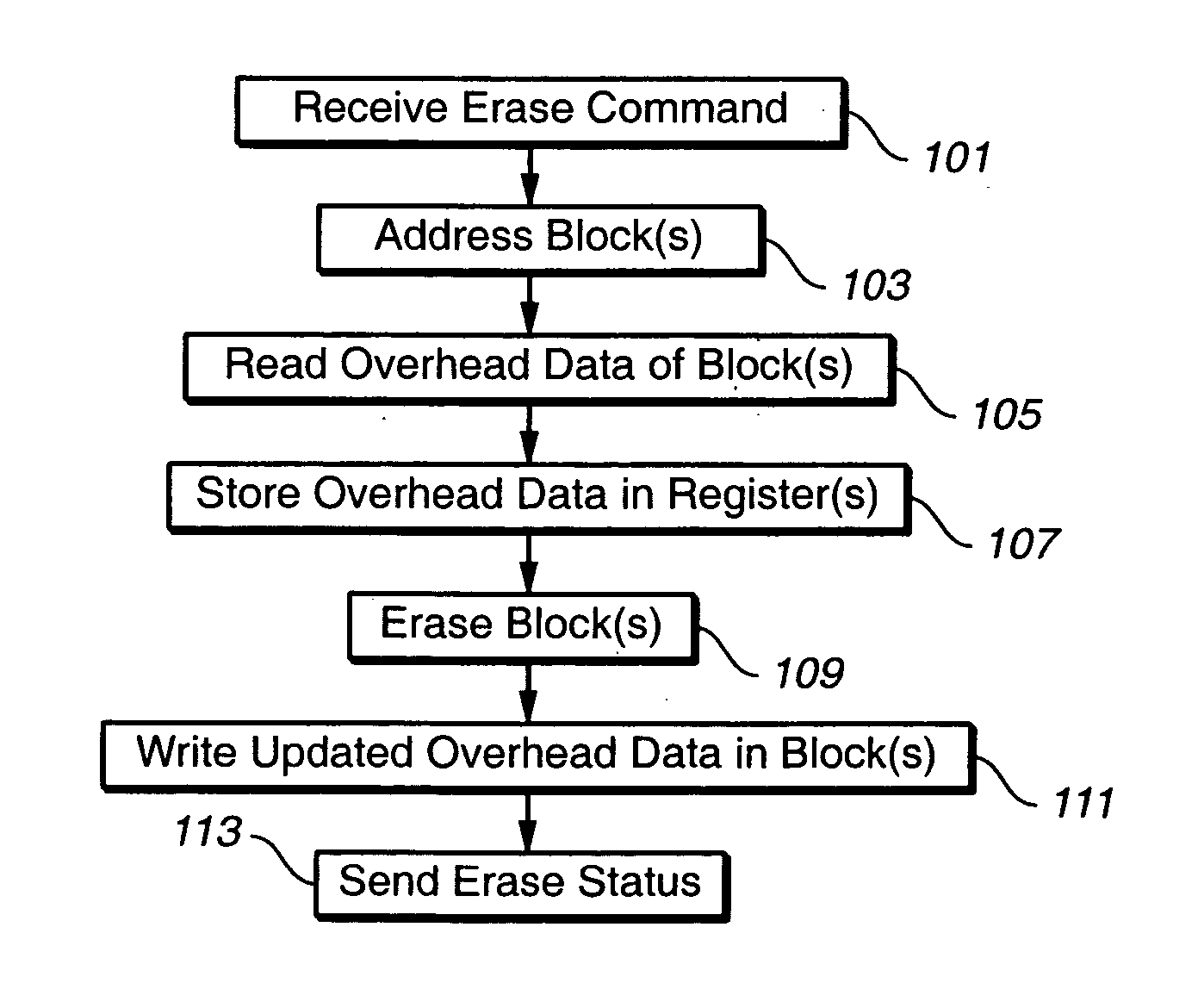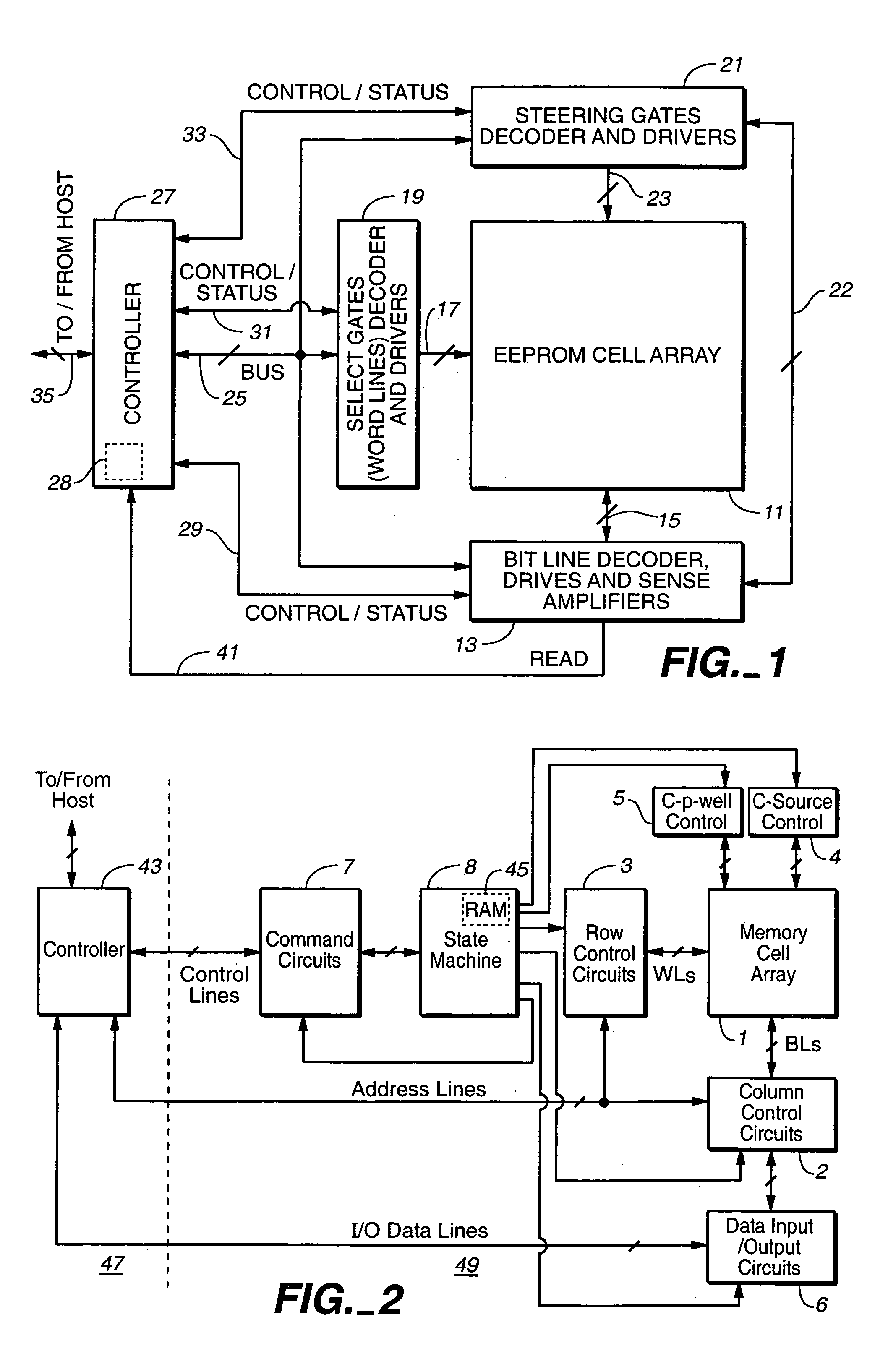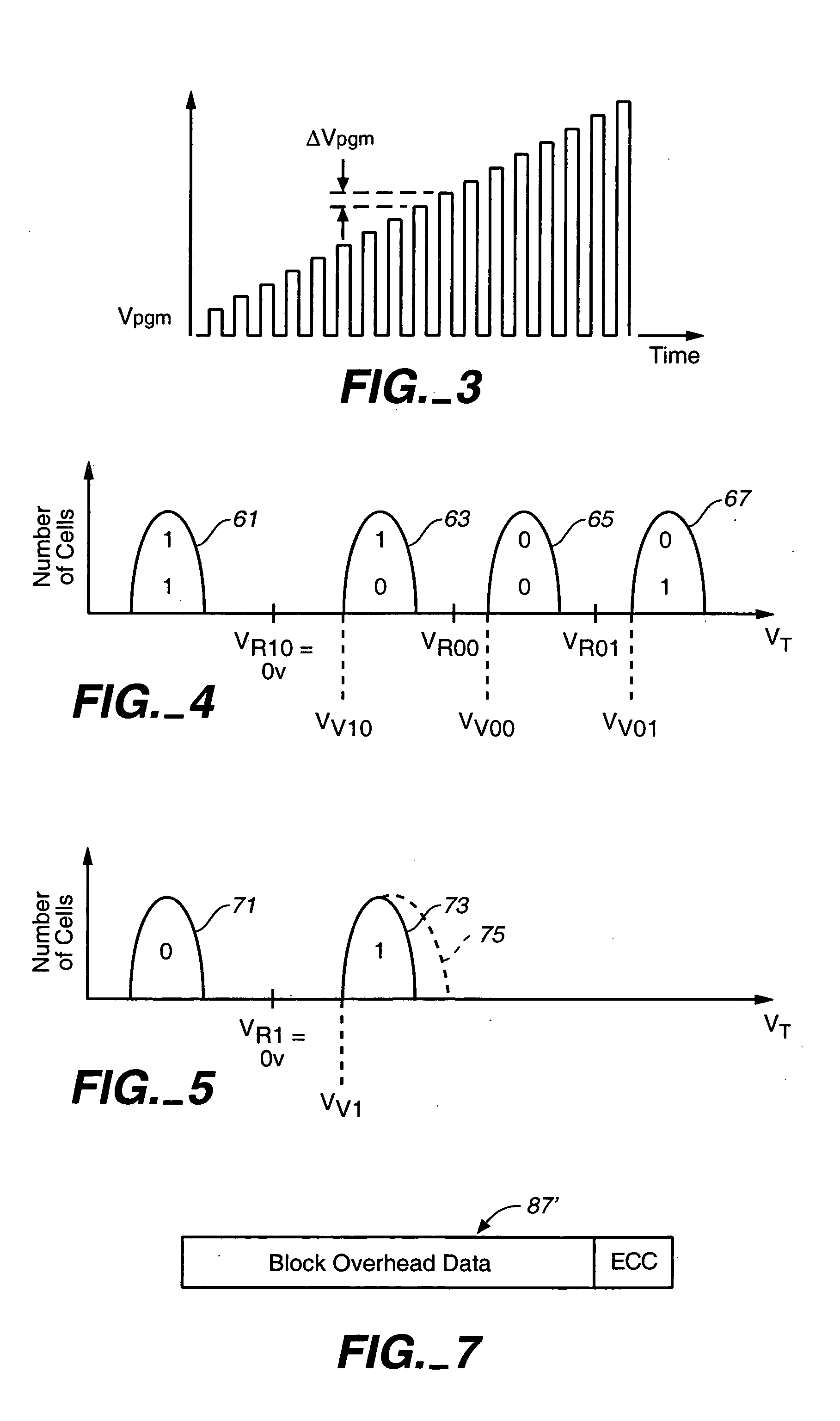Non-volatile semiconductor memory with large erase blocks storing cycle counts
a non-volatile semiconductor and erase block technology, applied in the field of non-volatile semiconductor memories, can solve problems such as adversely affecting the decision-making of memory controllers
- Summary
- Abstract
- Description
- Claims
- Application Information
AI Technical Summary
Benefits of technology
Problems solved by technology
Method used
Image
Examples
Embodiment Construction
[0034] An example memory system in which the various aspects of the present invention may be implemented is illustrated by the block diagram of FIG. 1. A large number of individually addressable memory cells 11 are arranged in a regular array of rows and columns, although other physical arrangements of cells are certainly possible. This system is particularly adapted for the array 11 to be the NOR type, as described above in the Background and in references incorporated herein. Bit lines, designated herein to extend along columns of the array 11 of cells, are electrically connected with a bit line decoder and driver circuit 13 through lines 15. Word lines, which are designated in this description to extend along rows of the array 11 of cells, are electrically connected through lines 17 to a word line decoder and driver circuit 19. Steering gates, which extend along columns of memory cells in the array 11, are electrically connected to a steering gate decoder and driver circuit 21 th...
PUM
 Login to View More
Login to View More Abstract
Description
Claims
Application Information
 Login to View More
Login to View More - R&D
- Intellectual Property
- Life Sciences
- Materials
- Tech Scout
- Unparalleled Data Quality
- Higher Quality Content
- 60% Fewer Hallucinations
Browse by: Latest US Patents, China's latest patents, Technical Efficacy Thesaurus, Application Domain, Technology Topic, Popular Technical Reports.
© 2025 PatSnap. All rights reserved.Legal|Privacy policy|Modern Slavery Act Transparency Statement|Sitemap|About US| Contact US: help@patsnap.com



